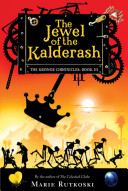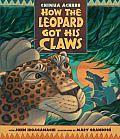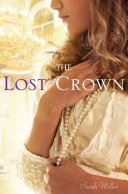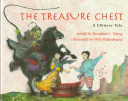From the deepest heart of the Moghul palace, her face hidden by veils, Nur Jahan came to rule all of Mogul India. This book tells the story of how she introduced efficiencies, encouraged trade, and made possible a great flowering of the arts. She hunted tigers, rode elephants to war, commanded a nation from behind a curtain, and did many other things that girls were not expected to do. Sections on the clothes Nur Jahan wore, the foods she ate, and why she is remembered today are included.
ruler
Sorghaghtani of Mongolia
On the windswept steppes of Mongolia in the 13th century, a princess was given the chance to rule, and her story is outlined in this book. Sorghaghtani took lands that were ruined by war and made them wealthy again, brought mutual respect and cooperation to a downtrodden and distrustful people, and, in a battle of wits that was like a giant chess game, won the imperial throne for her sons, which gave them the largest empire in the world. Sections on the clothes she wore, the foods she ate, and why she is remembered today are included.
The Queen’s Lady
England, 1584.When beautiful Lady Jane Rievaulx begins her service to the Queen at Richmond Palace, she is thrilled to see the court’s newest arrival . . . Master James Lacey. No matter that Jane was previously courted by the eldest Lacey brother—James is the one who has won her heart. For his part, James cannot deny his fascination with Jane; his plans, however, do not allow for love. He is about to set sail on a treacherous journey to the Americas, seeking absolution for what he sees as past sins. But when Jane is forced into a terrible situation by her own family, only one man can save her. Will Master James return to his lady before it’s too late?
The Jewel of the Kalderash

Fourteen-year-old Petra, her tin spider Astrophil, and their friends become entangled in the competition for the Roma crown, then set out for Prague in hopes of finally finding a cure for Petra’s father.
How the Leopard Got His Claws

In the beginning, all the animals lived as friends. The leopard, their king was strong but gentle and wise. Only the dog had sharp teeth, and only the dog scoffed at the animals plan to build a common shelter for gathering out of the rain. but when the dog was flooded out of his own cave, he attacked the leopard and took over as king. It was only then that the leopard returned with a new roar, sharp claws, and shining teeth, life for the animals would never be the same.
In this riveting fable for young readers, Nigerian writer Chinua Achebe, author of Things Fall Apart, evokes themes of liberation and justice that echo his novels about post-colonial Africa. Glowing with vibrant color, Mary GrandPre’s expressive and action-filled paintings bring this unforgettable tale dramatically to life.
The Lost Crown

Olga, Tatiana, Maria, and Anastasia–like the fingers on a hand, Tatiana the tallest, Anastasia the smallest, Maria the one most desperate for a ring. These are the daughters of the Tsar, the daughters of the last royal Russian family. The book tracks this loving cluster of sisters from the decks of their yacht to the prison walls of their final home. What do abdication and revolution mean to these young women? Told through each of their voices in alternating chapters, we see their day-to-day lives, in many ways, remain the same; they dote on their dogs, flirt with the soldiers, and are followed constantly by guards. But their desires for the future have all but disappeared. As conditions worsen and the provisional government loses power to the Bolsheviks, the girls huddle together to make sense of what is happening. At the same time hopeful and hopeless, naÏve and wise, their voices become a chorus singing the final song of Imperial Russia.
The Treasure Chest

A rainbow-colored magic fish helps Laifu protect his bride-to-be from the evil ruler Funtong.
